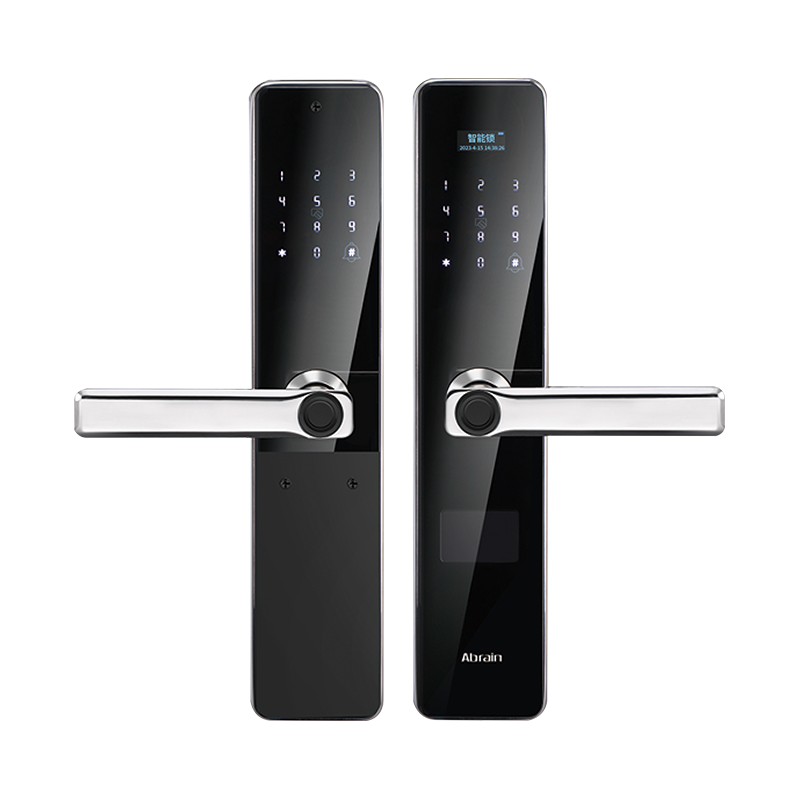What Are the Different Types of Waterproof Smart Locks?
The integration of digital access control into exterior doors, particularly those exposed to the elements, has increased the demand for waterproof smart locks factory. These devices provide keyless entry through various electronic means while being engineered to withstand moisture, humidity, and temperature fluctuations. The classification of these locks is not based on a single feature but on a combination of their power and connectivity, their mechanical operation, and their specific design for different door types.

1. Classification by Power and Connectivity
The core intelligence of a smart lock lies in its ability to connect to networks and users, which is fundamentally enabled by its power source and communication protocols.
Battery-Powered Locks with Wireless Hubs: Many common smart locks, such as those from brands like Yale or August, operate on standard batteries and connect to a home network via a separate bridge or hub using protocols like Zigbee or Z-Wave. This design keeps the lock's power consumption low. The hub, located safely indoors, handles the internet connectivity. For weather resistance, the external component is sealed, with gaskets protecting the battery compartment and keypad. However, the reliability of the lock is contingent on the hub; if the hub loses power, remote access is lost, though local operation via keypad or physical key may remain functional.
Battery-Powered Locks with Integrated Wi-Fi/Bluetooth: Some modern locks incorporate Wi-Fi or Bluetooth radios directly into the lock body. This eliminates the need for a separate hub, simplifying setup. The trade-off is that Wi-Fi is a power-intensive protocol, which can more frequent battery changes. To mitigate water ingress, these locks often feature more robust sealing around antennas and internal components. An example is a lock used on a rental property, where the tenant can be granted temporary Bluetooth access, and the owner can monitor access logs remotely via Wi-F
Hardwired Locks with Continuous Power: For commercial or high-traffic residential applications, hardwired smart locks are an option. These are connected directly to a building's low-voltage electrical system, providing a constant power source and eliminating battery management. The installation requires professional wiring, and the points where the wires enter the lock assembly are critical junctures that must be meticulously sealed with waterproof conduits and grommets to prevent moisture from tracking into the lock or the building's walls.
2. Classification by Mechanical Operation and Installation
The method by which the smart lock physically secures the door determines its compatibility and its mechanical vulnerability to the elements.
- Deadbolt Replacing Locks: This is the prevalent type. It replaces the entire existing deadbolt mechanism, both inside and outside. The external part contains the electronic keypad, fingerprint scanner, or other biometric sensor. The waterproofing challenge here is two-fold: sealing the new deadbolt hole in the door and, more critically, sealing the interface between the external plate and the door surface to prevent water from seeping into the lock's internal electronics or into the door itself. A poorly sealed faceplate can corrosion and failure.
- Lever Handle Integrated Locks: Common in commercial settings, these locks combine the latching mechanism and the access control into a single unit, often a door handle. The internal mechanism is more complex, involving a motor to retract the latch. Waterproofing must address the spindle hole and the larger footprint of the handle base. These are frequently used on glass doors or office entrances where a deadbolt is not the primary latch.
- Mortise Locks with Smart Modules: A mortise lock is a heavy-duty lock recessed into the door edge. Some systems add a smart layer by installing a weatherproof external keypad or reader that connects to an internal motor unit placed inside the door, which then activates the existing mortise mechanism. This approach can be advantageous as the sensitive motor is protected within the door, and only the rugged, sealed keypad is exposed directly to weather.
3. Classification by Application-Specific Design
Beyond general weatherproofing, some locks are designed with features tailored to specific environmental challenges.
- Marine-Grade Locks for Coastal Environments: Locks installed on beach houses or boats face constant exposure to salt spray, which is highly corrosive. These locks are often constructed from materials like 316-grade stainless steel, which has a high resistance to saltwater corrosion. Their seals are also designed to be resistant to UV degradation and temperature swings, which can cause standard seals to become brittle.
- Heavy-Duty Locks for High-Impact and Weather Conditions: For industrial settings or doors subject to high wind and rain, locks are built with a focus on both ingress protection and physical strength. They may carry an IP (Ingress Protection) rating, such as IP65, which certifies them as dust-tight and protected against water jets from any direction. The external casing is often made from reinforced materials to withstand physical impact.


